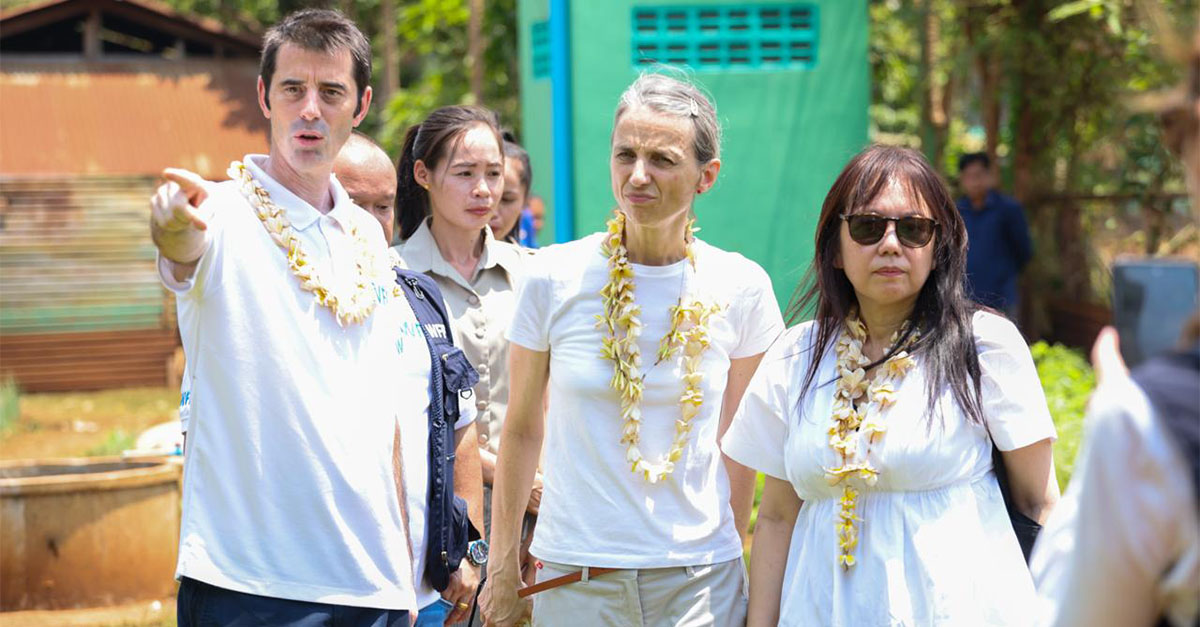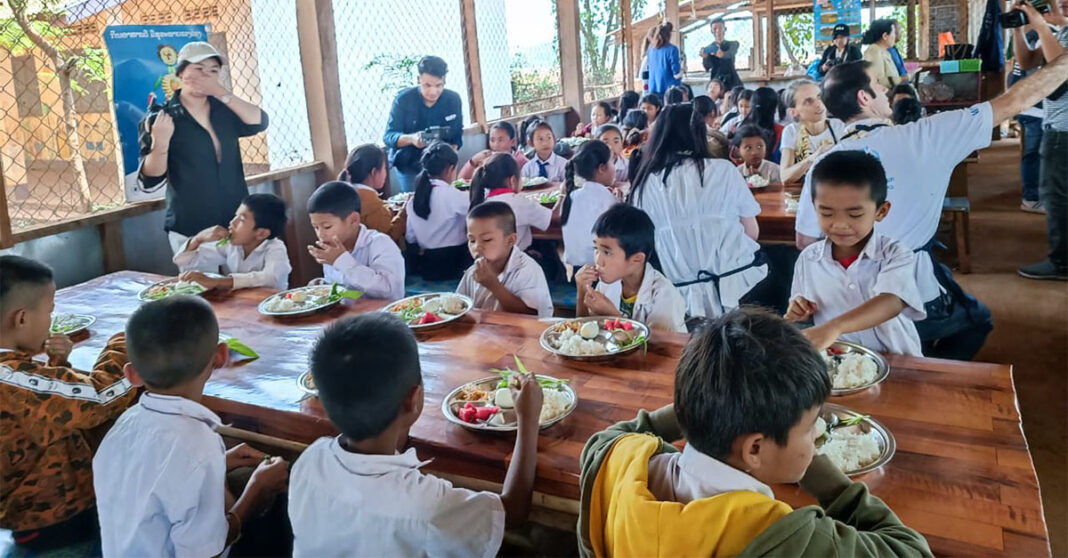In the southern provinces of Sekong and Salavanh in Laos, communities have long been striving for food security in an ongoing battle against malnutrition. These regions, once synonymous with poverty and deprivation, are now witnessing a remarkable shift, thanks to the collaborative efforts of international organizations and the Lao government. Locals now have access to empowerment programs and basic nutrition knowledge to become self-sustainable.
According to data from the United Nations World Food Program (WFP), in Salavanh, an estimated 43 percent of children under five suffer from chronic malnutrition. Meanwhile, Sekong, with the highest levels of food insecurity at 36 percent, witnesses one in two children under five facing this grave issue, which can have profound and lasting effects on their physical and cognitive development. Both provinces are additionally burdened by the impacts of climate change, enduring seasonal droughts and floods that devastate crops and habitats.
From 2 to 5 April, the ambassadors of France and Germany, alongside the WFP, traveled to the south to evaluate the status of villages benefiting the support of their government to a community nutrition and school meal program respectively.
Some of the visited villages have already benefitted from former support to their schools in the form of daily healthy school meals, via WFP in collaboration with the government.
Primary school children received not only a plate of food, but also an incentive to stay in school, which also motivated parents to send their children to school. This School Meal Program provided the schools with basic ingredients, including vegetables, fruits, meat, 100 grams of rice per person per day, and ten grams of vegetable oil per person per day, ensuring that the school chefs had access to all the tools needed to cook nutritious lunch meals.

As the school meal programs in the schools were handed over to the government in 2021, the government included a national budget line to provide local schools in underpriviledged areas with funds for school lunches worth LAK 1000 (USD 0.047) per person per day for a total of 175 school days. Among the recipients of these funds were Ngiew School in Salavanh, Vangmai village, and Kokpong School in Sekong. However, these schools have expressed concerns about the insufficiency of these funds.
“How can 1000 kip be enough when an egg nowadays costs at least 2000-3000 kip,” said the governor of Vapi district during the ambassadors’ visit to Ngiew school. Despite calls for action to increase the daily allowance, no concrete steps have been taken yet, according to the governor.
Although unable to offer direct financial aid, WFP tries to bridge this gap by helping to bring in donor support to work with local farmers to boost production so that food that is locally produced can reliably supply school meals. The government of Germany as stepped up to confirm support to school meals in 2023.
Marc-Andre Prost, the representative of WFP in Laos, emphasized the organization’s role in assisting villages and communities that lack sustainability or the means to support themselves, with eventual support transitioning to government responsibility. He noted WFP’s commitment to fostering a link between the school meal program and local agriculture, aiming to provide children with access to fresh produce, enhance nutrition, and strengthen the local economy.
“Our collaboration with the government has been extremely good,” Prost said. “What we are now looking forward to is working with the government to develop a model that is going to be sustainable, that the government can implement with domestic funds, and ensure the sustainability of the school meals program.”
WFP Support Bolsters Nutrition and Education Amid Persistent Challenges
Two villages, Nahouahed village in Salavan Province, and Vangmai village in Sekong Province, were once unable to provide adequate nutrition and food quality. However, with the assistance from WFP and the French Embassy, this issue is being addressed.
When asked about their hopes for the future, a resident of Nahuahed villager expressed gratitude for the ongoing support while emphasizing the centrality of farming in their lives. They explained that any financial assistance received would be used to improve their quality of life, focusing on education for their children, agricultural activities, and developing trades.
“We don’t have many opportunities here, so if we receive any financial help, our first priorities would be our children’s well-being and education, farming, and developing trades,” a villager at Nahuahed village, Salavan Province, said.

The French Ambassador to Laos, Siv-Leng Chhuor expressed France’s pleasure in contributing to the Lao Government’s efforts to achieve the UN Zero Hunger Goal. She highlighted France’s support for 139 food assistance projects worldwide in 2023, totaling more than EUR 170 million (around USD 180 million).
In Nahouahed village, direct support has been provided by the French Embassy under the Cash Assistance and Resilient Livelihoods for Improved Food Security and Nutrition (CARES) project.
The funding, evenly distributed between Sekong and Salavanh provinces, assists over 4,600 households by providing cash assistance to purchase nutritious food. Additionally, the project offers educational materials on farming and nutrition, along with grants for gardens to 1,600 households who complete these training sessions. This multifaceted approach aims to enhance nutrition and climate resilience within communities. By prioritizing the needs of women, children under five, and especially those in the critical first 1,000 days of life, these initiatives play a key role in fortifying community food security and resilience.
While WFP and other international partners are making efforts to address the issues faced by rural communities and schools in poverty, challenges remain. Insufficient support from the government, likely stemming from ongoing economic issues, has hindered progress. Despite this, the international food organization is committed to working with the government to help as many disadvantaged villages as possible.



